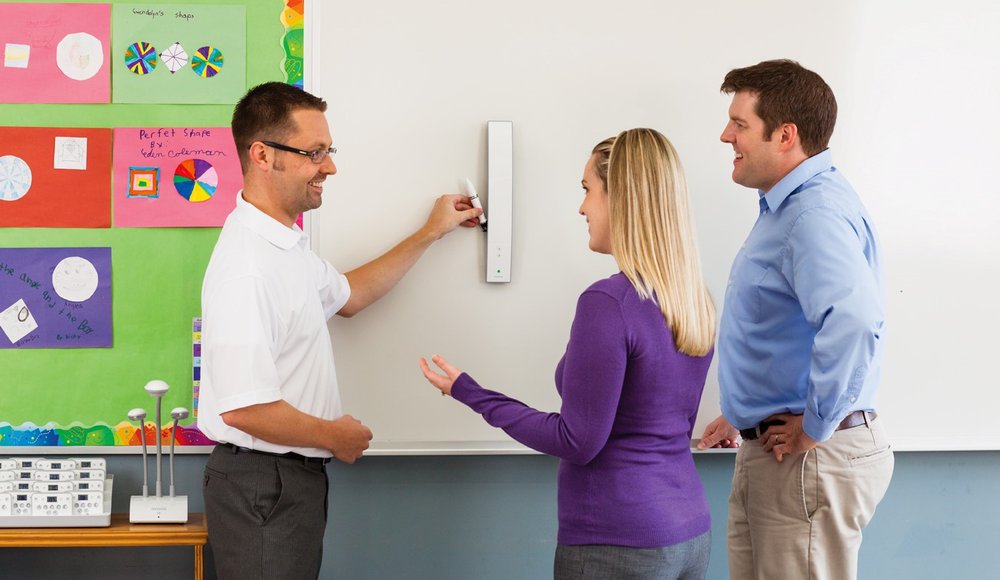As educators, we know what it’s like to attend a one-day professional development event and never have any follow-up training. It’s also just as frustrating to listen to a trainer and not be able to practice what you learned because the equipment is not readily available. Furthermore, many of us have struggled through a training never being able to touch a piece of technology equipment.
While it is important to consider that most all professional development opportunities are essential to better train and support educators in the effective use of instructional technology, it is equally important to understand that professional development is ongoing and not a one-time event.
Here are some tips for a successful professional development plan:
- Conduct a Needs Assessment: Survey staff and gather feedback on the types and levels of technology skills that they have. Adult learners have a very diverse set of skills and needs, so be sure to choose several different areas and craft pre-needs assessments for particular topics. Depending on the tools for training, there will likely be both novice and advanced users. Adjust needs knowing you will have varied skill levels of learners.
- Have a Plan: Technology integration training should be properly planned. Planning considerations should involve varied levels of skills, timelines, classroom support, and customization based on the results of the needs assessment. Adjust and modify the plan as needed, and gather information from learners throughout the process to ensure all needs are being met.
- Include Administration: In order for effective professional development to occur, all members must be on board. When administration participates in professional development and plays an active role, a meaningful change in pedagogy will occur. Award small successes and make notice of the progress and change that has happened as a result of the professional development.
- Include Coaching and Mentoring: A 2011 study conducted by the International Society of Technology in Education (ISTE) demonstrated that teachers who received coaching implemented new instructional methods at a rate of 85 percent, while only 15 percent of teachers without coaching support implemented new methods. Allow time for teachers to work with each other, plan for projects, and observe classroom events. Make use of technology coaches and instructional technology specialists to ensure they have time to work with teachers directly in the classroom.
- Make Sure the Technology Is Readily Available: The technology that the teachers will be using should be readily available before training even occurs. Teachers should have immediate access to the tools and resources they need to get started right away. Successful implementation will only occur if the technology is available once training has occurred.
- Provide Access to Resources for Continued Support: Have a place for teachers to refer to that will supply them with content-specific assistance, additional learning tools, and resources of best practices with the technology. These resources might be blogs, training videos, step-by-step training manuals, or videos of best practices in the classroom. Make these resources readily available and update them regularly. Ask for input from teachers to allow for a shared repository.
- Make Use of the Technology During Training: Use and train with the technology the teachers will be learning. Make sure there is enough equipment for each teacher to train with—hands-on practice should be an essential part of the training. Training should focus on the integration of the technology, not the technology itself.
- Focus on the Curriculum, Not the Technology: Technology should be used as a teaching and learning tool tied to curricular goals and assessment—instructional objectives should be first and foremost. What is it that you want students to know and be able to do? In what ways do you want to improve student collaboration and discussion? Select appropriate technologies to support these objectives and questions you have. How will the technology and classroom tools be used to do this? What technologies can support your instructional objectives?
- Provide Ongoing Support: Elicit feedback from teachers on any additional support they need for effective classroom use. Instructional coaches should be an integral part of providing ongoing support. Additionally, professional development should progress from introductory to more advanced topics as teachers become more comfortable with the support systems they have in place.
- Form Professional Learning Communities: As we know, Professional Learning Communities, or PLCs, involve reflecting on your instructional practice, the effects that instruction has on students, and implementation of new insights gained from the PLC meeting. The PLC group should be centered on a common goal. An atmosphere of trust is essential for effective communication, and you should allow for time throughout the year to meet and plan accordingly. Use technology solutions that enable electronic communities for communication both inside and outside of school.
Professional development may not be the only challenge when it comes to making sure your technology is getting used—and being used effectively. Want to make sure your technology launch is a success from start to finish? Be sure to check out Boxlight’s guide on How to Launch Tech Successfully in the Classroom.
Lynn Erickson (Reedy) is a course Instructor at TechTalk Professional Development, Instructional Technology Specialist











